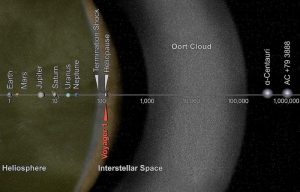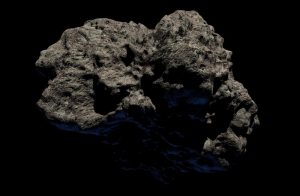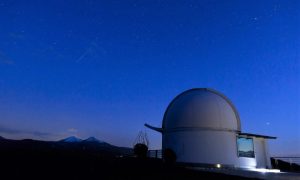Oort cloud
In the Solar System, beyond Pluto's orbit there is a spherical cloud formed by small astronomical bodies, mostly asteroids and comets called the Oort Cloud.
What is the Oort Cloud?
It is a spherical cloud composed of small astronomical bodies, mostly asteroids and comets, which is located beyond Pluto's orbit. The Oort Cloud or Öpik-Oort Cloud has that name in honor of the researchers who discovered it, JanOort and Ernst Öpik, and its origin is found in the first phases of the Solar System's creation with space objects that gradually moved away from the Sun due to gravity from other planets, causing those bodies to group together in the confines of the Solar System forming the Oort Cloud.
Also known as Öpik-Oort Cloud, it is named after the researchers who discovered it, JanOort and Ernst Öpik.
The objects that make up the Oort Cloud are called “Transneptunians ” because they are beyond Pluto at the end of the solar system. These are mostly long-path asteroids and comets.
Oort Cloud history
In 1950, the Dutch astronomers Jan Oort and Ernst Öpik, supported by orbit research and analysis of comet trajectories, developed a hypothesis, now accepted, which states that the nuclei of long-period comets come from a spherical cloud beyond Pluto’s orbit surrounding the solar system.
According to this hypothesis, bodies that form the Oort Cloud were created in the first phase of Solar System creation and these were close to the Sun but little by little they were expelled towards their confines because of gravitational forces of the planets that were formed at that moment.
Origin of the Oort Cloud
The Oort Cloud hypothesis states that the cloud formed more than 4.6 million years ago around the Sun.
It is composed of many objects that were initially closer to the Sun but due to the gravitational force of large planets such as Jupiter, these objects were ejected into very long, elliptical orbits beyond Pluto’s orbit.
Oort Cloud characteristics
According to some researchers the Oort Cloud has the following characteristics (unfortunately, not all of them confirmed with accuracy, as it has not been possible to observe them directly):
- It’s beyond Pluto’s orbit.
- It is spherical in shape.
- It is made up of objects that are estimated from one to one hundred million.
- Long-period comets come from this cloud.
- Its total mass can be equivalent to that of the planet Jupiter.
Where is it located?
The Oort Cloud is located one light year away. This means that if we wanted to reach it, we would have to travel at light speed (300,000 kilometers per second per year to reach the cloud).
Structure
The Oort Cloud is structured in two parts, the interior and the exterior. The inner part has a toroidal shape with an extension of between 2000 ua (astronomical unit) and 20,000 ua; the inner part is known as the Hills Cloud in honor of the astronomer Kack G. Hills. Hypotheses state that it is home to tens of hundreds objects.
The outer part is spherical, and its dimensions are between 20,000 ua and 50,000 ua. This part is not linked to the Sun and is where most of the long trajectory comets of the Solar System are produced.
Composition
The Oort Cloud is composed of elements such as ice, methane, ammonia, among others, which are formed very close to the Sun when the Solar System is in its early stages of formation.
At present, it houses between one and one hundred billion Transneptunians bodies in which we can find long trajectory comets such as Halley’s comet and asteroids in which Sedna is found, 2000 CR105, 2006 SQ372, and 2008 KV42, which are located inside.
Many of their objects became comets because of interaction with a nearby star that pushed them into the sun and whose orbit was altered by gravitational effects of large planets such as Jupiter and Saturn.
Known objects from the Oort Cloud
Trasneptunian objects found in Oort Cloud are long trajectory comets such as Halley and four objects named Sedna (discovered in 2003), 2000 CR105 (discovered in 2000), 2006 SQ372 (discovered in 2006), and 2008 KV42 (discovered in 2008).
How to cite this article?
Briceño V., Gabriela. (2019). Oort cloud. Recovered on 4 May, 2025, de Euston96: https://www.euston96.com/en/oort-cloud/










